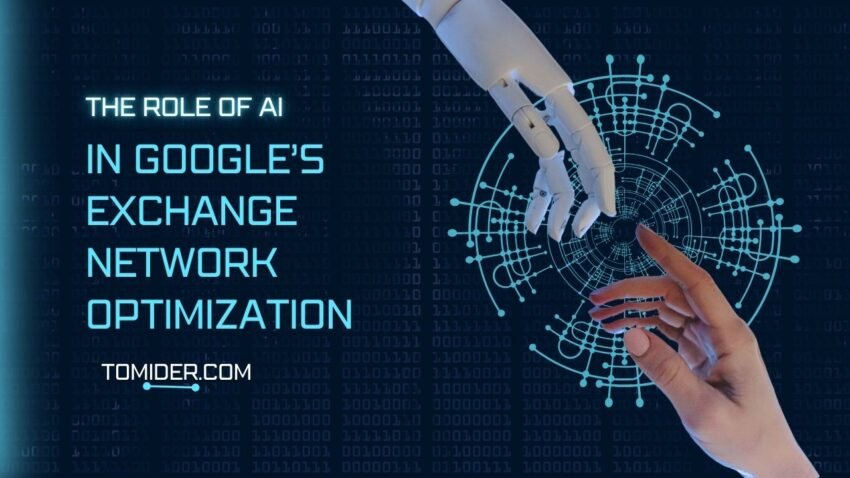
The Role of AI in Google’s Exchange Network Optimization
In today’s digital age, where information is at our fingertips, search engines play a crucial role in our daily lives. Google, being the most prominent search engine, continuously evolves to provide users with the most relevant and useful information. Behind the scenes, artificial intelligence (AI) plays a significant role in optimizing Google’s exchange network. But what exactly is the role of AI in this process? Let’s delve deeper and uncover the intricacies of this fascinating technology.
Google AdX and GDPR: Navigating Compliance and Best Practices
Understanding Google’s Exchange Network
Before diving into the role of AI, it’s essential to grasp the concept of Google’s exchange network. This network comprises various algorithms and systems that work together to deliver search results to users. These algorithms analyze and rank web pages based on relevance, authority, and user experience.
Here’s a breakdown of how it works:
- Ad Inventory: Publishers, which could be websites, apps, or other digital platforms, offer ad space on their properties.
- Ad Exchanges: These are platforms where publishers make their ad inventory available for purchase by advertisers. Google operates one of the largest ad exchanges called the Google Ad Exchange (AdX).
- Advertisers: These are individuals or companies looking to place their ads online to reach their target audience.
- Ad Networks: These are intermediaries between advertisers and publishers. They aggregate ad inventory from multiple publishers and offer it to advertisers. Google AdSense is an example of an ad network.
- Ad Servers: These are the systems that deliver ads to users’ devices when they visit a website or use an app.
Now, the Google Exchange Network comes into play by connecting all these elements. Advertisers use the Google Ads platform (formerly known as Google AdWords) to bid on ad space across various websites and apps. Their bids are processed through the Google Exchange Network, which evaluates factors like bid price, ad relevance, and user targeting criteria to determine which ads to display and where.
This system operates in real-time, known as real-time bidding (RTB), where ad space is bought and sold instantly as a webpage or app is loaded. Google’s Exchange Network uses sophisticated algorithms to match the right ads with the right audience, maximizing the effectiveness of advertisers’ campaigns while also generating revenue for publishers.
Overall, the Google Exchange Network is a key component of Google’s advertising infrastructure, enabling efficient and targeted digital advertising across a vast network of websites and apps.
What is AI and How Does it Work?
Artificial Intelligence, or AI, refers to the simulation of human intelligence processes by machines, especially computer systems. It involves the creation of algorithms that enable computers to perform tasks that typically require human intelligence, such as learning, problem-solving, and decision-making.
AI works through various techniques and approaches, including:
- Machine Learning (ML): This is a subset of AI where algorithms learn patterns and insights from data without being explicitly programmed. ML models are trained on large datasets, allowing them to make predictions or decisions based on new input.
- Deep Learning: A type of ML that uses neural networks with many layers (hence “deep”) to learn representations of data. Deep learning has proven highly effective in tasks like image and speech recognition.
- Natural Language Processing (NLP): NLP enables computers to understand, interpret, and generate human language. It’s used in applications like chatbots, language translation, and sentiment analysis.
- Computer Vision: This field focuses on enabling computers to interpret and understand visual information from the real world. It’s used in facial recognition, object detection, and autonomous vehicles.
- Robotics: AI is also used to develop robots capable of performing tasks autonomously or with minimal human intervention. This involves integrating AI algorithms with sensors, actuators, and other robotic components.
- Expert Systems: These are AI systems that emulate the decision-making ability of a human expert in a specific domain. They use rules and knowledge representations to provide advice or make decisions.
Overall, AI systems work by processing vast amounts of data, learning from it, and making decisions or predictions based on the learned patterns. The goal is to create machines that can perform tasks intelligently, sometimes even surpassing human capabilities in specific domains.
The Evolution of Google’s Algorithms
Google’s algorithms have undergone significant evolution since the company’s inception in 1998. Initially, Google’s search engine relied heavily on PageRank, a link analysis algorithm developed by Google’s founders, Larry Page and Sergey Brin, which ranked web pages based on the number and quality of links pointing to them. However, over the years, Google has introduced numerous updates and algorithm changes to improve the quality and relevance of its search results. Here’s an overview of some key milestones in the evolution of Google’s algorithms:
- PageRank (1998): Google’s original algorithm, PageRank, revolutionized search by considering the importance of a webpage based on the quantity and quality of links pointing to it.
- Florida Update (2003): The Florida Update was a significant algorithm change that targeted spammy SEO tactics such as keyword stuffing and low-quality backlinks. It had a major impact on many websites’ rankings.
- Panda (2011): The Panda update aimed to lower the rank of low-quality sites with thin content, content farms, and sites with high ad-to-content ratios. It prioritized high-quality content and penalized content farms and sites with poor user experience.
- Penguin (2012): Penguin targeted webspam, particularly manipulative link building practices such as buying links or participating in link schemes. It aimed to reward sites with natural, high-quality backlinks and penalized those using spammy tactics.
- Hummingbird (2013): Hummingbird introduced the concept of semantic search, aiming to understand the intent behind a user’s query rather than just matching keywords. It focused on providing more relevant results by considering context and user intent.
- Mobilegeddon (2015): With the rise of mobile devices, Google introduced this update to prioritize mobile-friendly websites in mobile search results. It encouraged website owners to ensure their sites were responsive and optimized for mobile devices.
- RankBrain (2015): RankBrain is a machine learning algorithm that helps Google understand the meaning behind search queries and deliver more relevant results. It uses AI to interpret and process complex search queries, improving the accuracy of search results.
- BERT (2019): BERT (Bidirectional Encoder Representations from Transformers) is another AI-driven algorithm update aimed at improving understanding of search queries, particularly for longer, conversational queries. It focuses on context and the relationship between words in a sentence to provide more accurate results.
- Core Updates: Google regularly releases broad core algorithm updates that aim to improve search results overall. These updates can impact site rankings and visibility, and they often focus on improving relevance, authority, and user experience.
- E-A-T (Expertise, Authoritativeness, Trustworthiness): While not a specific algorithm update, E-A-T has become an important factor in Google’s ranking criteria. It emphasizes the importance of expertise, authoritativeness, and trustworthiness of content and websites, particularly in areas such as health, finance, and news.
These are just some of the major milestones in the evolution of Google’s algorithms. Google continues to refine and update its algorithms regularly to provide users with the best possible search experience and to combat spam and low-quality content.
How AI Enhances Exchange Network Optimization
AI plays a pivotal role in optimizing Google’s exchange network in several ways:
Personalized Search Results
AI algorithms analyze user behavior, search history, and preferences to deliver personalized search results. This ensures that users receive content that is relevant to their interests and needs, enhancing their overall search experience.
Predictive Analysis for User Intent
By analyzing vast amounts of data, AI can predict user intent more accurately. This enables Google to anticipate what users are searching for and deliver more relevant results, ultimately improving the quality of search results.
Real-time Data Processing
AI algorithms are capable of processing and analyzing data in real-time, allowing Google to adapt its search results dynamically. This ensures that users receive the most up-to-date information available.
Enhancing User Experience
AI-powered features such as voice search, autocomplete suggestions, and rich snippets enhance the overall user experience by making search more intuitive and efficient.
Addressing Spam and Low-Quality Content
AI algorithms can identify and penalize spammy and low-quality content, ensuring that only high-quality and relevant content ranks well in search results. This helps maintain the integrity and reliability of Google’s search engine.
Google AdX vs. AdSense: What’s the Difference?
Future Implications
The role of AI in Google’s exchange network optimization is poised to grow even further in the future. As AI technology continues to advance, we can expect more personalized and accurate search results, improved user experiences, and better protection against spam and low-quality content.
Conclusion
In conclusion, AI plays a crucial role in optimizing Google’s exchange network, ensuring that users receive the most relevant and high-quality search results. By leveraging AI technology, Google continues to evolve and improve its search engine, ultimately enhancing the overall search experience for users worldwide.
Frequently Asked Questions
How does AI improve search engine optimization?
AI enhances search engine optimization by analyzing user behavior, predicting user intent, processing real-time data, enhancing user experience, and addressing spam and low-quality content.
Will AI replace human intervention in search engine optimization?
While AI plays a significant role in search engine optimization, human intervention is still necessary for strategic decision-making and content creation. AI complements human efforts by automating repetitive tasks and providing valuable insights.
Can AI-powered search engines be biased?
AI-powered search engines can exhibit bias if not properly trained or if biased data is used during the training process. However, companies like Google continuously work to mitigate bias and ensure fair and unbiased search results.
How does AI personalize search results?
AI personalizes search results by analyzing user behavior, search history, and preferences to deliver content that is tailored to individual interests and needs.
What are the ethical implications of AI in search engine optimization?
Ethical implications of AI in search engine optimization include privacy concerns, algorithmic bias, and the impact on job displacement. It’s essential for companies to address these concerns and ensure responsible use of AI technology.








Leave a Reply